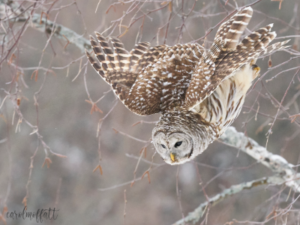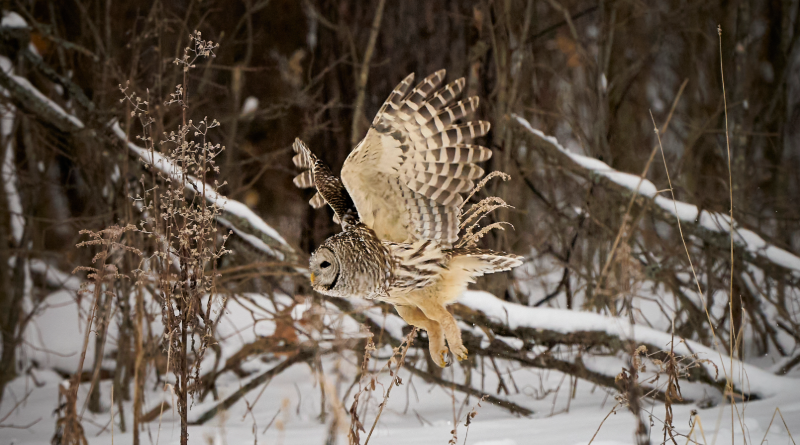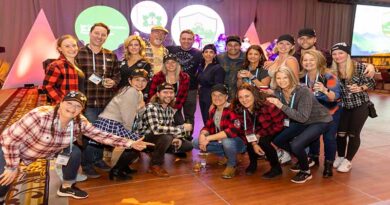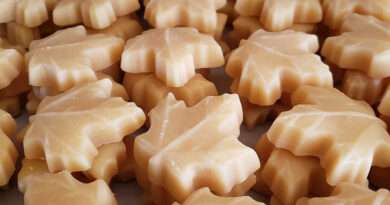Cold Comfort: Life in the Subnivean Zone
Most wildlife migrate, hibernate, or insulate to adapt to winter conditions in cottage country. However, some small mammals adapt to their surroundings and remain active all winter. With a body too small to hibernate, small mammals find comfort and safety in the subnivean zone!
Subnivean is derived from Latin for sub (below) and nives (snow) and encompasses the area between the ground and the top of the snowpack. This specialized habitat provides animals like mice, shrews, voles and red squirrels some protection from cold temperatures, biting winds and dangerous predators.
The subnivean zone is created in two ways. When snow falls, it can land on surfaces like stiff or dense plant matter, rocks and logs and gets hung up, creating snow free cavities used as living quarters for small mammals. Furthermore, the warmer ground heats up the snow particles above, crystalizing them, providing a thin, frozen layer like a stucco ceiling in this unique subnivean lodging.
Fluffy snow is 90% air and ideal for maintaining a steady ground temperature. Like a down jacket, the air pockets reduce cold air infiltration and trap heat from below. Snow eventually changes shape from crystalline to more rounded and combined with the pressure of gravity, these factors slowly increase the snow density. However, even when compacted, snow has more air in it than ice and therefore retains some of its insulation value. As the snow depth increases, this thick duvet of snow will keep the subnivean zone at a relatively cozy zero degrees Celsius for most the winter.
For larger warm – blooded animals, hibernation is a great strategy which enables them to conserve energy when food is scarce. However, for other wildlife, the need to hibernate is eliminated as they cache seeds, grasses and nuts that they accessed through an elaborate set of tunnels under the snow. For the carnivorous shrew, these underground tunnel networks give access to overwintering insects, larva and slugs in decomposing logs and under the leaf litter.
After spring melt, you can trace the path of these tunnels and find chambers with food caches, soft bedding material and even a latrine- a very organized approach to the subnivean lifestyle! Tunnels sometimes lead to the base of deciduous trees, a food source for voles. Winter bark chews by voles can girdle small trees killing them by cutting off life sustaining water and nutrient flow from the roots.
With a keen eye, you may notice entry and exit holes in the snow, evidence of a busy life below. Scampering from one hole to the next, small track patterns are evidence of nighttime sorties on the surface. These holes are necessary for coming and going but also act like an exhaust pipe, releasing the built-up carbon dioxide from plant decomposition and animal respiration, keeping it at a safe level for these down under denizens.
However, this specialized winter habitat isn’t fool proof. Even with the noise muffling qualities of snow, winter predators have evolved the capacity to hear the scurrying sounds of movement below the surface. Wolves, coyotes and especially foxes can pinpoint the location of small mammals under the snow. Plunging head-first, they use their long snouts to capture their prey.
 Owls also have acute hearing and have been observed locating small mammals under snow from their perches 30 meters away! Their disk-shaped face funnels sound to their acute hearing sensors which are located asymmetrically on both sides of their facial disk beside their eyes. When the owl hears an interesting sound, it will move its head until the sound enters both ears at the same time. This allows them to pinpoint the exact location of their prey with deadly accuracy.
Owls also have acute hearing and have been observed locating small mammals under snow from their perches 30 meters away! Their disk-shaped face funnels sound to their acute hearing sensors which are located asymmetrically on both sides of their facial disk beside their eyes. When the owl hears an interesting sound, it will move its head until the sound enters both ears at the same time. This allows them to pinpoint the exact location of their prey with deadly accuracy.
With serrated feathers that muffle sound, they silently fly down and knife deep into the snowpack with their talons extended. It is a quick death to the unsuspecting small critter below. On your off-trail snowshoe rambles this winter, look for owl snow angles, wing prints in the snow, evidence of these nighttime predators on the hunt.
Away from the snow packed trails we prefer, there is a busy world of activity taking place in a unique sub-snow ecosystem. The drama of the winter wildlife food web often plays out, unnoticed by us, under the cover of darkness and a blanket of snow.
Submitted by Rick Whitteker. You can find Rick at home in the forest, as a seasoned trail guide, nature writer and passionate wildlife enthusiast in the Haliburton Highlands.
Photo Credit of the owl to Carol Moffat




